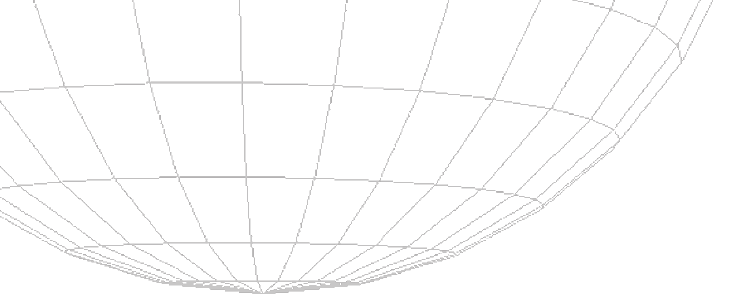
Chapter 13
Modeling for Games
3D models for games are commonly referred to as low-poly objects
since they have a limited polygonal count that varies according to
the power of the 3D graphics card and the real-time 3D game
engine. The continual increase in the graphics processing capacity
of video game systems and computers directly affects the resolution
of 3D models for games.
3D engines have a limited amount of processing power with
which to display — in a minimum of 30 fps — all the textures, 3D
animated models, scenery, sprites, and enemies, along with comput-
ing all the background events running in a game. That’s why a 3D
game modeler should be aware of the number of polygons used by
the game’s objects and characters. But with the power of game
engines constantly increasing, why should you worry about the poly
count? Even with the high processing capacity of game engines, the
overall system must be optimized for maximum performance in a
number of different PC systems (video game controllers have a
standard system for computing and displaying graphics). The func-
tion of the game development team is to optimize the process and
make the game run smoothly; this includes the 3D artist and the
mesh resolution of the game models.
In this chapter we discuss the basics of real-time surfacing and
structure regarding OpenGL display and processing.
323
..................Content has been hidden....................
You can't read the all page of ebook, please click here login for view all page.
